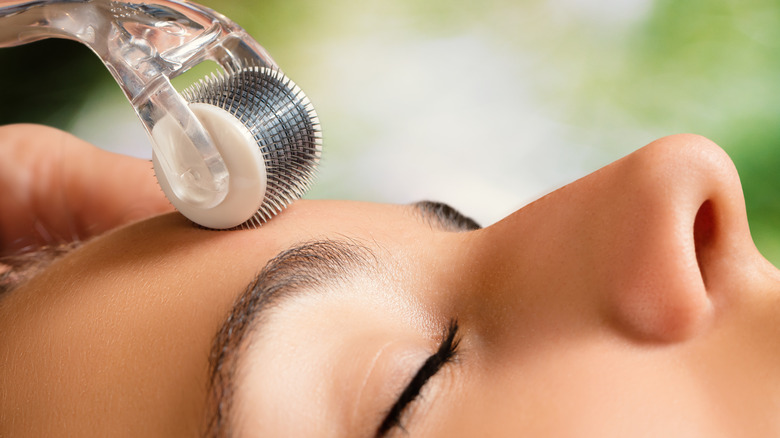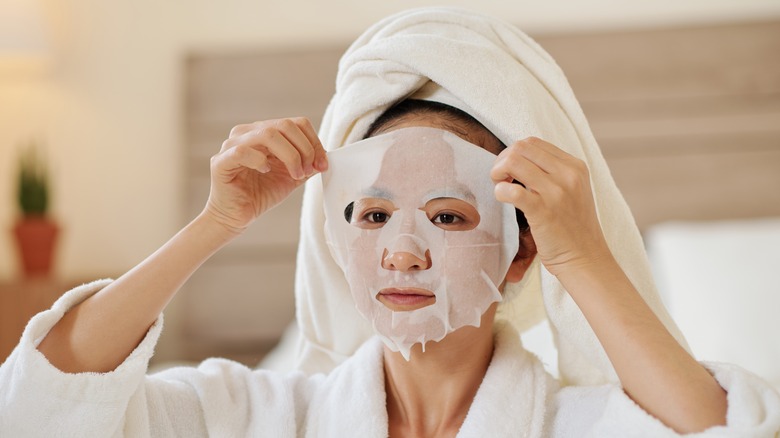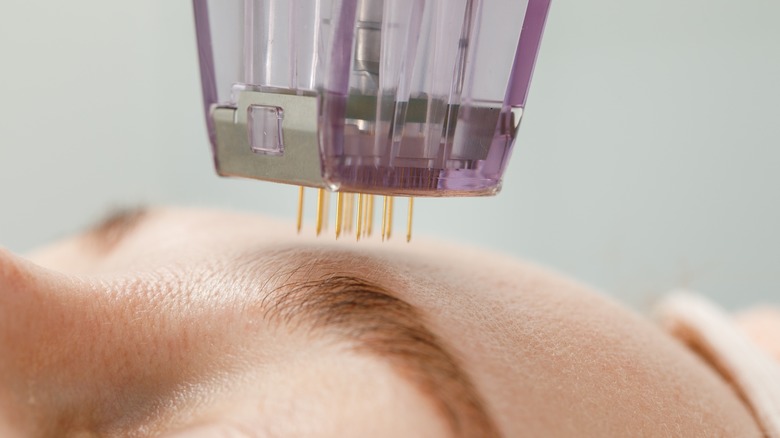Derma Rolling Vs. Derma Stamping: Which Is Best For Your Skin?
We may receive a commission on purchases made from links.
Derma rolling and derma stamping are two DIY versions of microneedling, a professional skin treatment that stimulates healing through micro-trauma. These treatments break the skin's barrier with microneedles, stimulating collagen production. The microneedles on derma rollers are attached to their wheels, while derma stamps come with flat microneedle cartridges.
Microneedling can help treat acne scars, fade stretch marks, and improve the general texture of the skin. It can also reduce pore size and wrinkles, making it a worthwhile antiaging procedure. Similarly, derma rolling and stamping can be incredibly helpful in improving skin texture and fading scars.
Even though they only offer a fraction of professional microneedling's benefits, they can be visibly effective if used correctly. This involves prior sterilization of your tools and caring for your skin post-trauma. You should also ensure that you never derma stamp or roll on active acne. With that in mind, there are a variety of pros and cons to derma rolling vs. derma stamping.
Derma rolling is best for dry skin
Derma rollers are a better choice for dry skin because they are less drying. While derma stamping and rolling work similarly and reduce pore size and oil production, derma stamps have stronger effects. This is because they make more micro-punctures than derma rollers. In addition, a 2010 report published in The Journal of Korean Medicine Ophthalmology, Otolaryngology, and Dermatology noted that derma stamping is preferred for oily skin.
If you're trying to use derma stamps to reduce your pore size or sebum production, use a stamp with 0.8mm needles. Start by cleansing your face with water and then a toner. You can apply topical local anesthesia, such as Lidocaine, to reduce some of the inevitable pain. Let it sit on your face for 15 minutes before wiping it off with a clean microfiber towel.
Now, the stamping can begin — but it's not that straightforward if you are trying to treat wrinkles or acne scars. For the first five minutes, you'll need to stamp your face without any serum. Then, for the last 10 minutes, you can apply your favorite serum that contains any skincare ingredient that treats stubborn acne scars or wrinkles. That's it; you're done! It would be best if you avoid washing your face throughout the day. Instead, use a soothing sheet mask right away and finish with a rich moisturizing cream. Bonus points if it has collagen and aloe vera.
Derma stamping is best for sensitive skin
One of the major downsides of derma rolling is that it is often unsuitable for people with sensitive skin. While some irritation can be expected, people with sensitive skin often experience harsher results. These include inflammation, redness, and even acne.
Consequently, derma stamping is less triggering to sensitive skin because it doesn't require intense dragging on the skin. One helpful tip is incorporating soothing and anti-inflammatory ingredients in the treatment. Think aloe, chamomile, rose, and oats.
If you have dry skin and have your heart set on derma stamping, do not despair. You can help your skin cope with drying by including a moisturizing serum in your everyday routine to cancel out the effects (we love Vichy Mineral 89 Hyaluronic Acid Moisturizing and Hydrating Serum for Sensitive Skin and Dry Skin). Finally, sunscreen is the keyword you want to remember through all of this. Applying it will protect your skin and allow it to heal the right and safe way.


